Your fish tank’s water looks somewhat cloudy and at this point, mechanical filtration seems like a good idea.

Or, perhaps, you want to take the aquarium’s clarity to the next level and want to see things crystal clear as if fish were floating in the air?
Should you use filter floss media and is it worth it, compared to a sponge?
Or you’re simply trying to think of a DIY filter floss as an alternative?
What’s the frugal approach here? Could cheap polyester filter floss be the solution to all of your problems?
Let me help.
Why should you use a fish tank filter floss in the first place?
In aquatic systems mechanical filtration is used to capture fine water-polluting particles. These particles can lead to unsightly or even hazardous water quality. In an aquarium, it makes sense to implement filter floss for the following reasons:
Using filter floss media is the fastest and most efficient way to achieve crystal clear aquarium water. It will mechanically filtrate detritus that would otherwise spoil your tank’s water quality. Filter floss should be changed regularly to prevent a buildup of decomposing debris.
It will also catch the microscopic bubbles responsible for cloudy water. You can expect clear aquarium water in about 3 to 4 days.
Note that filter floss is way more efficient than a sponge filter when it comes to mechanical filtration.
At first glance, sponges will appear cheaper in the long run.
However, this may not be the case if you know what kind of filter floss to get and where to look.
Author’s note: Sometimes, the haziness of the water is caused by a bacterial bloom. Bacterial blooms make the water appear smoky all throughout the aquarium. In these cases, there is no visible debris.
Other times overly-abundant microalgae spores are the cause behind the murky look of aquarium water. In these cases, mechanical filtration will not be enough.
You will need to sterilize your water with ultraviolet light to prevent further reproduction of bacteria or algal spores.
Other advantages
The use of filter floss in aquariums is a rather controversial topic. It is said to accumulate nitrites (link to where I explain how to handle that in detail).
The logic to that is that the nutrients will collect in it, and start decomposing there.
That actually applies to having any form of filter media, not just filter floss.
The truth is, however, that you’ll have Nitrites in the aquarium anyway, whether you choose to circulate them through a filter or not.
They will just be more spread out and the beneficial nitrifying bacteria in the tank will take care of them either way. By collecting the detritus and periodically removing the floss you are actually doing more about filtration than without it.
Another impressive benefit of using filter floss I found is that I don’t really need to wash my other filter media.
The floss does almost all the filtration.
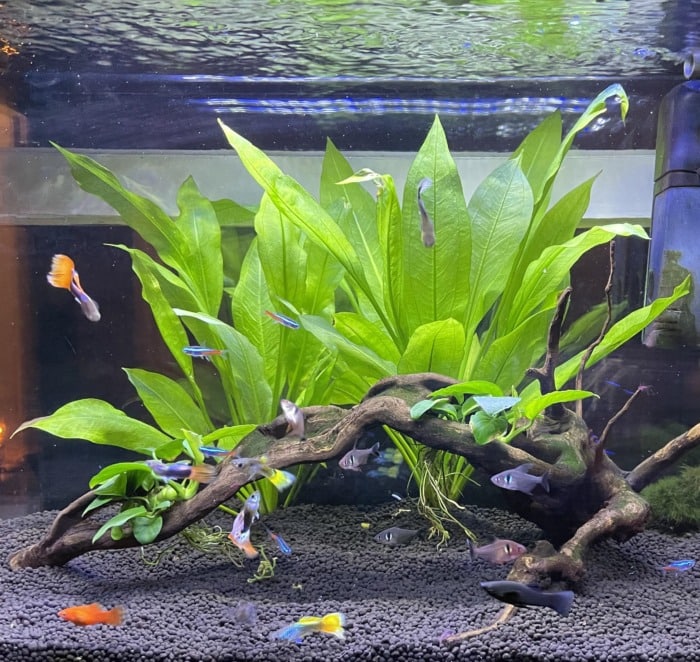
by 94RD
I rarely find myself rinsing the media where the beneficial bacteria live.
By having filter floss, I clean or change my other filter media, perhaps, twice or three times a year. What a relief…
By the way, filter floss is not a solution for freshwater aquariums only.
In marine tanks, the back chambers can get nasty with time.
That is if you don’t stop your filters during feeding or run them too early afterward.
Having filter floss media in there will significantly reduce the build-ups in these chambers over time.
Which brings me to my next point.
Is filter floss better than a filter sock?
Filter socks play an important part in the mechanical filtration of saltwater aquariums.
And even though many reefers don’t realize it, these socks need to be replaced quite often.
Generally speaking, filter socks should be replaced at least every three days.
And since they aren’t cheap, this can end up costing you a small fortune if you don’t wash them.
Which is a whole can of worms I’ll get to in a moment.
Filter floss, on the other hand, is extremely cheap and doesn’t require any washing. A single bag of the stuff will last you an entire month, doing pretty much the same job as a filter sock.
The only downside to filter floss is that it doesn’t filter out particles as good as a 100 micron filter sock.
Which, quite honestly, is barely even noticeable.
And is a price I’m willing to pay for not having to wash another filter sock ever again.
Sure, some might argue that doing “the laundry” a bit more often isn’t such a hassle.
And they might be right.
But I would rather avoid putting filter socks that are oftentimes full of bristle worms in the same place I wash my clothes.
Using Poly-Fil (polyester fiberfill) in the aquarium filter?
Changing filter pads can turn out expensive in the long run.
Here’s how to get around that by using Poly-Fil in the aquarium:
To avoid costly “aquarium-grade” filter media you can simply replace it with 100% polyester quilting material. For extra efficiency – go for the high-loft batting. The high-loft polyester batting is thicker and therefore more convenient to use for filtering purposes. A good brand to look for is FairField’s Poly-Fil quilt batting.
The quilt batting this company makes is completely fish-safe and inert.
It’s unbelievably efficient as well.
It will “polish” your water extremely well, making it appear as if your fish are floating in the air.
It’s always stunning the first time you see your aquarium water this way.
You can either use this type of quilt batting for your display sessions when you have guests at home or all the time. It’s up to you.
I use it full-time.
The quilting batter is bonded which means it will not have loose fibers.
So the small fibers will remain where they belong, not being able to clog your filter.
How to use it in an aquarium?
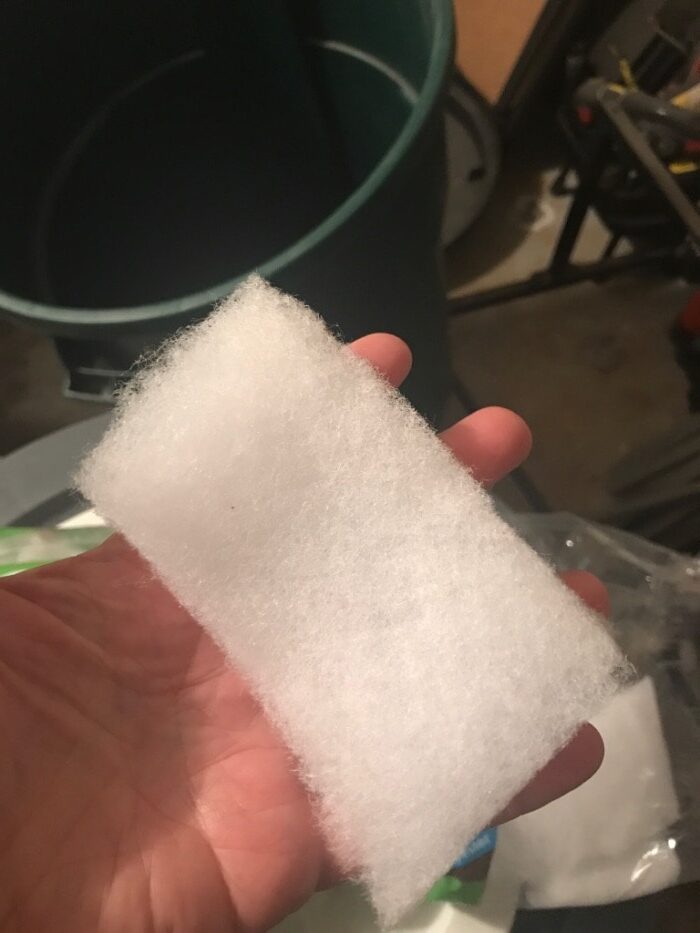
by reefwiser
This is how to use this type of filter floss in your aquarium filtration:
- Use sharp scissors when cutting the pieces to prevent chewing.
- Place it wherever you want in your filter. I often choose to place mine right before the bio-media.
- Control how thick the layer will be by folding it if needed.
Having this product as filter floss does not require as much diligence as well.
In my very dirty tanks, I change mine every 4 to 6 days.
You can absolutely go longer than that, just monitor it for debris build-up and see how yours responds to your own tank’s waste levels.
Also, this floss can occasionally be used in canister filters as well.
In mine, I add it every month or so and change it if I notice a reduced water flow.
If you’re a proud owner of one of the better canister filters out there you should have plenty of room to experiment with the added quantity. And I get crystal clear water for my display tanks.
Anyway, it’s a perfect solution for sump chambers as well.
Some users report rinsing the DIY floss pads and reusing them. I don’t do that.
The stuff is so affordable that I choose to change it whenever.
Talking about price, you can purchase a pound of the stuff for the equivalent of the money you’d spend on a couple of packs of chewing gum.
Where to buy it?
Here’s how to save money when looking to buy Poly-Fil:
Poly-fil can be found at Walmart and other crafting and fabric stores if you have the time to look for the right one.
Just make sure it is 100% polyester and it hasn’t been treated with any chemicals.
Mold and mildew-resistant fabrics have chemicals in them that are highly toxic to fish.
If you’re a busy person, or in a hurry, or simply like to shop from your couch you can purchase it on Amazon here. I’ve chosen the right product in the link. It comes in a huge bag that contains a 45″ x 60″ (or 1.14 x 1.53 meters) sized sheet.
Note: You may notice the “flame retardant” label on the bag.
Experienced fishkeepers know that anything that is flame retardant has been treated with chemicals that are lethal to fish.
Worry not though.
In this particular case it means that the polyester has inherited flame retardant properties.
Pure polyester is such on its own, because of its chemical bonds and it does not require additional chemical treatment.
So in regards to this type of Poly-FIl, the term “flame retardant” does not refer to a particular set of chemicals, but rather a function.
Yet another inexpensive route – pillow stuffing
I did promise you a dirt cheap option, didn’t I?
This is it.
With this method you’ll get the most for the least money:
You can find filter floss in pillows.
This is probably your most inexpensive alternative.
Again same rules apply – 100% polyester, undyed, and unscented to ensure fish safety.
Go to the store and find the cheapest pillow possible.
The stuff inside will last you for more than a year, if not 2, depending on the tank you’re filtering.
Doing some calculations you’ll discover that this way you’ll save a fortune on filter pads in the long run.
It’s as effective as the poly-fil quilt material in making your water look as transparent as pure air.
The polyester pillow stuffing can be used all over your filter.
It can even act as your sole bio-media, housing beneficial bacteria in it.
This is not a claim, I have tried it myself and it has worked perfectly fine.
My tank remained cycled despite water and decor changes.
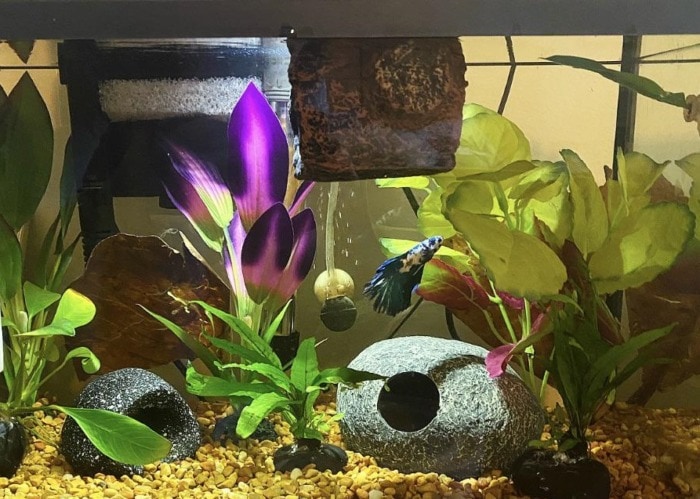
by ktknrly
So that’s another couple of bucks in your pocket.
Another good way to put the pillow filter floss to use is to reduce your filter’s intake flow.
If you’re having fry (juvenile fish) in the aquarium they are potentially in danger of being sucked in.
Not many filters have an adjustable flow rate so you can use the filter floss to control it while doing some extra filtration.
If you do choose to use it this way, you can only replace the floss in the initial uptake pipe, as it will wear out in 3 to 5 days.
The pillow polyester filling does have one disadvantage though.
Its fibers are really fine and it may clog your filter’s propeller. It’s annoying to manually unclog that.
Why would I recommend it then?
There’s an easy solution to the problem, of course.
Just use some sort of mesh bag to contain it.
Though a pantyhose sock will do a decent job at that you may want to go the extra mile.
Seachem makes something that may come in handy.
The product itself is creatively called “The Bag”.
It’s a 180-micron mesh that’s able to contain even the smallest media on the market.
It has been originally designed to hold the fine particles of Purigen, another product of Seachem.
However, in this case, you can use it to house your pillow filter floss and prevent propeller clogging.
See the micron bag here (at Amazon).
My Conclusion
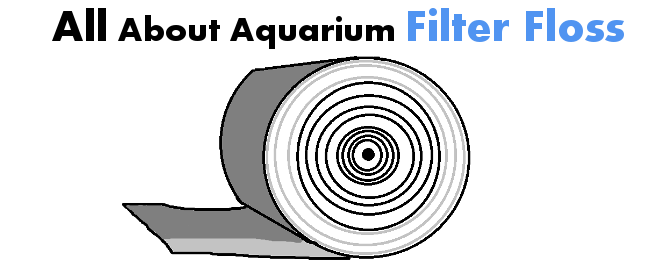
Given how insignificant the cost can be and how little maintenance is required, I think using filter floss in a fish tank is a no-brainer.
It will provide your aquarium with a stunningly clear view of your fish.
And what is there to fishkeeping other than being able to enjoy your aquarium in High Definition, right?
Do leave a comment if you have additional questions.



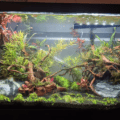
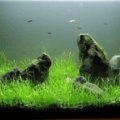



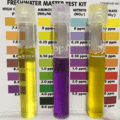
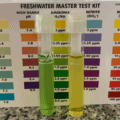

Love the article!! Also the extra articles you offer as well! You’ve answered Some fish questions I’ve had for years. Do you have any turtles? I have 2 so I’m always looking for information for them and their tanks
Thx, I’ll try it.